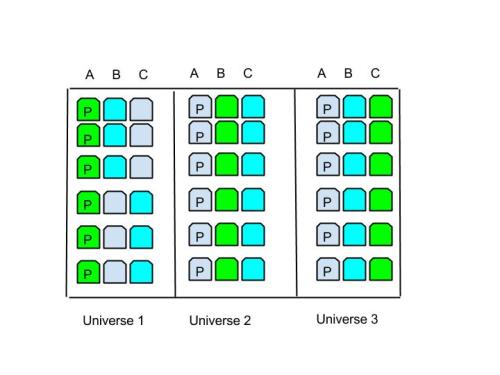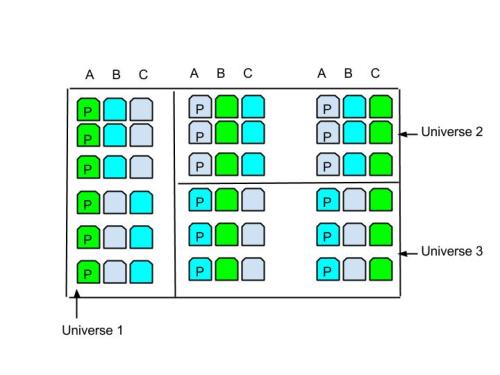People often express the sentiment: “Life is short.”
I want to know what people mean when they say “life is short” and whether they are right.
In one sense, “life is short” is not a candidate for truth or falsehood. Life is exactly as long as it is. Instead, when people say “life is short”, often, they’re actually making an exhortation. That is, they’re saying that one ought to live one’s life as if one’s life were short. They usually mean that one should pay attention to doing what one holds to be important and valuable: travel more, spend more time with one’s family, donate more to charity, and so on. Thus, when someone asserts “life is short”, they’re often offering advice or counsel. If so, it doesn’t make sense to ask if it is true or false. Instead, one should ask whether the advice is wise or unwise—I’ll say more about this later.
***
The above analysis is fine as far as it goes. But often people do think or feel that there is a sense in which life actually is short. What could that be? I suspect, when people say “life is short”, they mean something like: Considering all the things that one wants to accomplish in one’s life—traveling the world, learning to sing or paint or dance, reading great literature, and so on—life is too short to accomplish either all or a significant fraction of these goals.
If this is what they mean, then “life is short” can be true or false. Its truth of falsity will depend on the details of the person being considered. For a given person, whether or not her ambitions are achievable within her lifetime depends not just on how long her life is but also on what her ambitions are and what resources are available to her.
To illustrate, if my ambition in life is go to Mars, then it’s almost certainly true that my life is too short for that. Why? First, it’s highly unlikely that within my lifetime, I’ll acquire the resources necessary to go to Mars on my own. Second, it’s unlikely that there will be manned missions to Mars in my lifetime. And finally, even if there were manned missions to Mars, given my education, historical background, and my physical condition, it seems unlikely that I would be selected as an astronaut for that mission. But if my life were to be longer, then there would be more opportunities for me to go to Mars and perhaps I could acquire the resources and the skills necessary to capitalize on those opportunities.
To take a sadder example, if a child is born into abject poverty in a war-torn country, then most probably her life is too short to become a professor at Harvard. (I’m not saying it’s impossible. It may be more probable than me going to Mars.)
The two examples above are cases where life is short because, given a person’s situation, their ambitions are not accomplishable within the duration of their lives. But this needn’t always be the case. Suppose you were born into a middle-class family in a relatively prosperous society, and your ambitions are to have a stable job, have a happy family, read all of Shakespeare, and perhaps see the Northern lights once. For these ambitions, there is no reason to think that life is too short.
We might ask: is life generically short? One way to make this more precise: For people in a given population (say, people born into middle-class families in the UK in the past 30 years) is life too short for them, on average, to achieve their ambitions? It’s not at all obvious what the answer is, or how one would measure it. It seems like an interesting question for a sociologist. (One thing to keep in mind is that many people’s ambitions change over time. I’m setting aside these complications for now.)
***
But the above discussion doesn’t explain why people often strongly feel that their life is too short. To understand this, consider the circumstances under which people are likely say that life is short. Take a typical example:
“It seems just like yesterday that my daughter went off to college. And now it’s ten years later, and she’s getting married. Wow, life is so short!”
People commit a fallacy when they use vivid memories of events long past as evidence for the brevity of life. Typically, memories of recent events are more vivid than memories of events that are farther back in the past. I remember what I ate for lunch today much better than what I ate for lunch the same day last week. But some memories remain vivid even after a long time. The day your daughter goes off to college is probably going to be very emotional, and therefore, it’ll be vivid even after a decade. When you consult the memory, in your mind, it feels “just like yesterday”— it’s just as vivid as a memory from yesterday. But when you look at the calendar, you see that ten years have gone by. Since these two things seem contradictory, you conclude that the intervening decade must have, somehow, gone by very quickly. I think this quirk of memory is why people often take their lives to be short.
***
A danger of relying on vivid memories of long-past events to judge the speedy passage of time is that, in doing so, you discount all of the important and valuable things that happened in the intervening period. When you are in the thrall of the memory of your daughter going off to college, you might find it hard to recall all the memorable events that happened in that decade: perhaps you attended some great events, or you traveled to some fascinating destination, or you reconnected with an old friend.
There is a deeper problem here. People assume that valuable or meaningful events are identical to memorable events. Suppose I cook myself a simple, tasty, and healthy breakfast and I eat it by myself, with a good cup of coffee, before going to work. This meal might not be particularly memorable—indeed, I might forget it within a week—but that doesn’t mean it wasn’t valuable or meaningful. I enjoyed the flavors when I ate it. The breakfast provided me energy and kept me in a good mood throughout the day. So, when people complain that life too short, they often fail to recognize that their lives are full of valuable and meaningful things that aren’t particularly memorable.
***
Let’s go back to the beginning. There, I analysed “life is short” as a piece of advice that exhorts people to focus on what is truly important in their life, or to work harder, or to avoid procrastination. When is this good advice?
The above analyses suggest that the advice that’s most apt depends sensitively on the person and their situation. For instance, if my ambition is to go to Mars, perhaps the best advice for me is that I ought to reduce my ambitions rather than to work harder to reach my ambitions. On the other hand, if my ambition is to see the Northern lights, but I’m not really taking any action towards it, the best advice might be that I ought to plan a trip and save money, and to point out to me that I only have so many years left to live.
Similarly, if I’m feeling sad that I’ve not achieved much in the past few years, then perhaps it’s best to advise me to focus on the valuable, but perhaps unmemorable, things that happened to me over the past few years; or to point out to me the memorable and valuable things that did happen to me, but which I’m failing to think of right now. On the other hand, if I’m feeling sad because I have certain reasonable ambitions that are very important to me, and I’m not taking any concrete actions towards achieving them, then it might be useful to point out that life is short.
***
Finally, there is one sense in which life is indeed too short. If your life is generally good, then, all else being equal, it is better to have more of that life. (I don’t accept that death adds meaning to life.) In this sense, life is short simply by virtue of the fact that life is finite.

